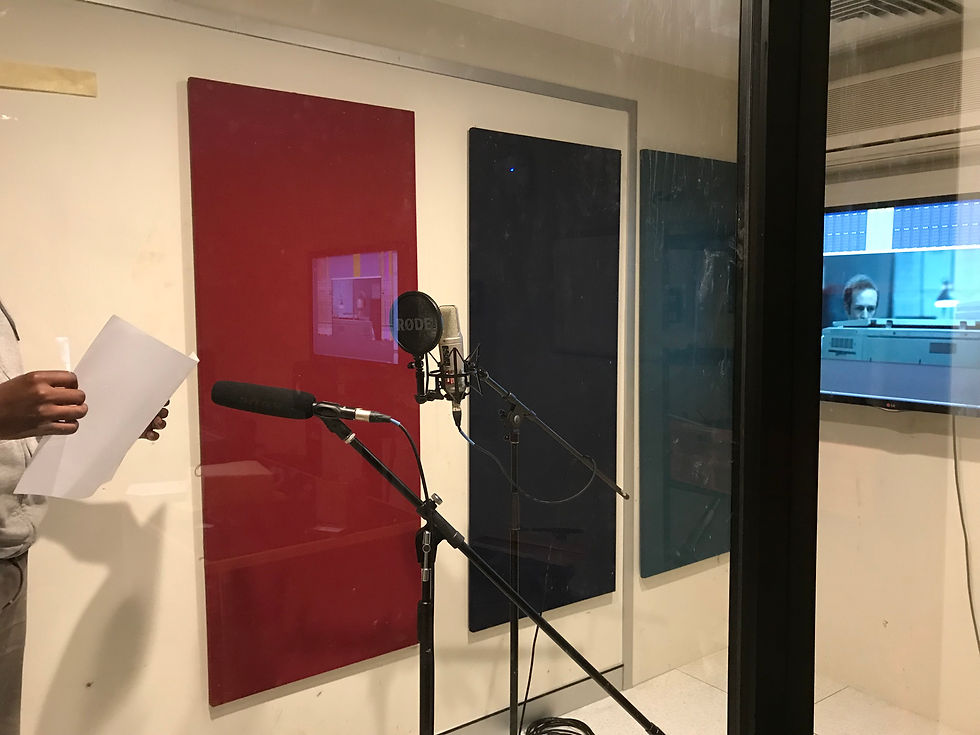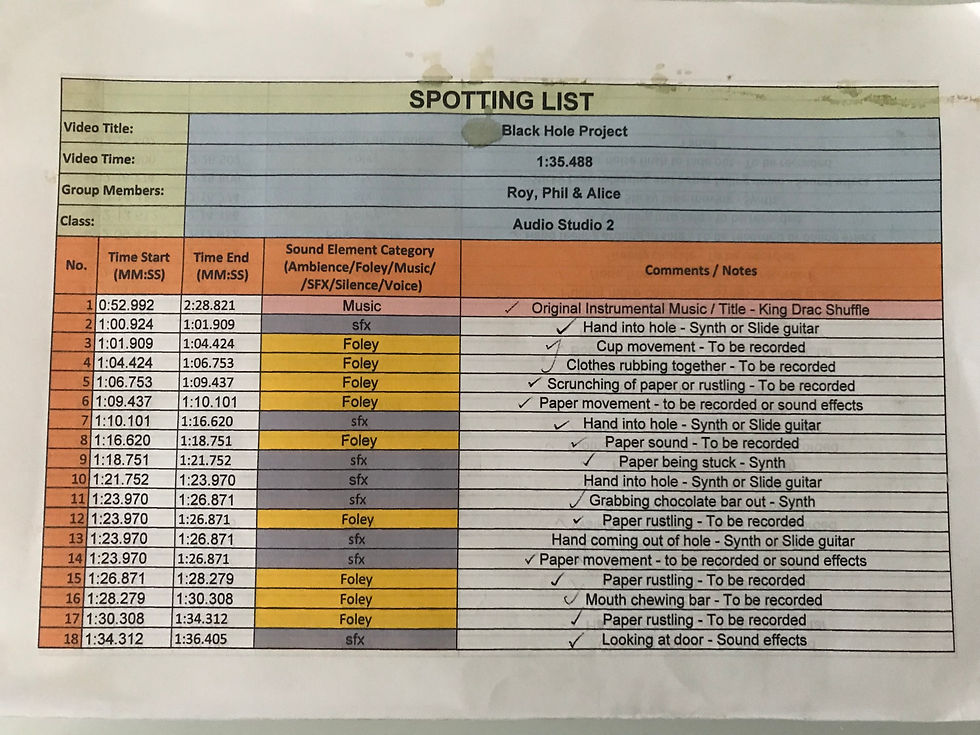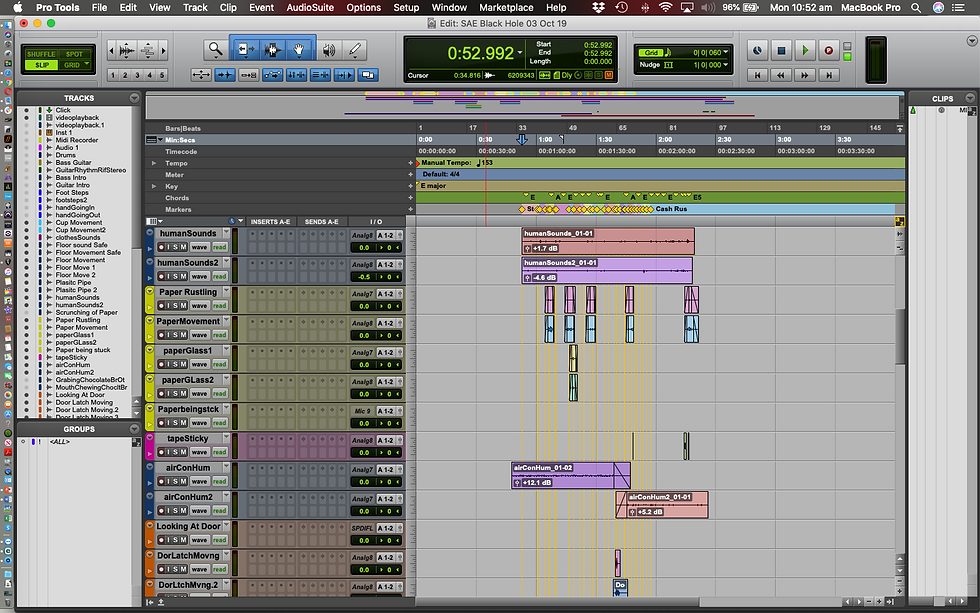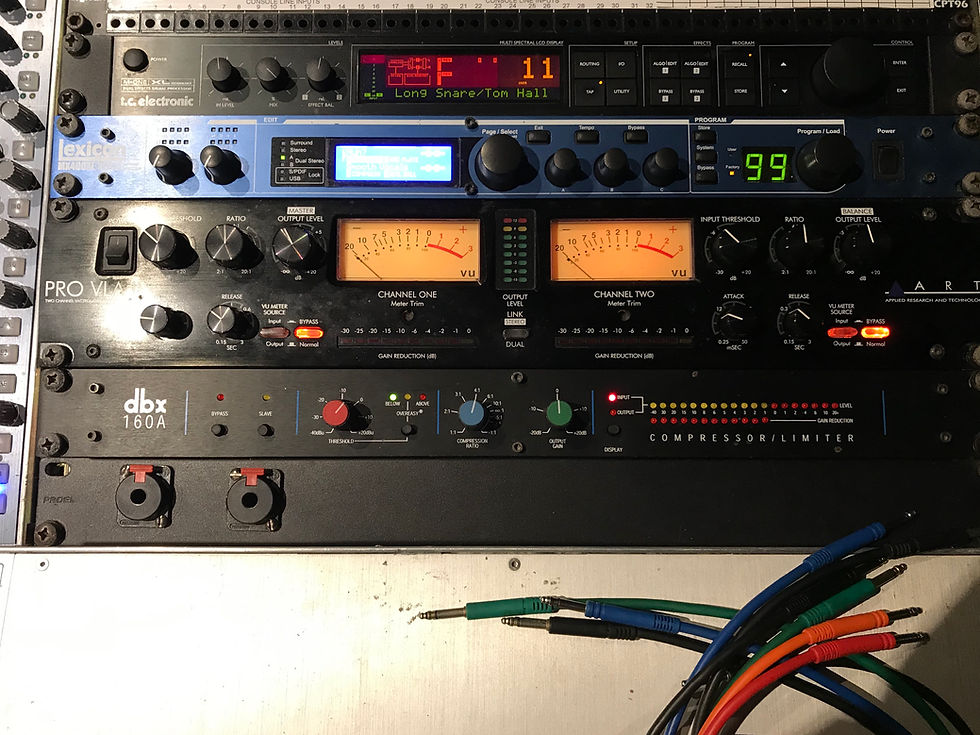Learning the C24 Foley Studio
- Roy Fry

- Nov 2, 2021
- 2 min read
The C24 studio is the Foley studio at SAE. (Week 3 Blog 1)

After we spent Wednesday in class learning how to use the C24 Foley Studio which uses a digital console connected to the ProTools software in the DAW. The Black Hole Project booked the studio straight away so we could record all the foley's we needed in one session. We ended up booking the studio for 8 hours, but we only needed it for 6 to 7 hours.
Phil in the foley booth creating foley's in time with the short video clip.

Phil's getting the feel and timing right as he tries to sink with the TV screen. The first recording was getting paper rustling down, so it looks and sounds natural when the audience experiences the finished product.

The microphones we used were the Rode's NTG-1 and NT2-A. .



WE experimented with the microphones to see which one or both suited the foley sound we were trying to imitate best.
We found that depending on what sound we where trying to create it would very on what microphone and positioning of the mic we would use. Most of the recordings we used both microphones at the same time, so we had options to play with.
We used the Rode shotgun (NTG-1) as the close up microphone due to the fact it would capture the sound in front better and use its sound cancelling frequency capability to give the recording a cleaner sound.
For the room microphone we used the Rode's NT2-A housed in a SM6 cradle. Sometimes we would just use the NT2-A as the main microphone. It depended what sounds we were recording and if we were in the booth or recording sounds in the control room.
For example - we had to record a door opening, so we recorded the C24 entrance door, as it had a better latch sound than the other door to the right, which had a lot of noise coming out once you open the door.

While we were recording the foleys, we used a check off list to keep us on track and to spot for any other noises we might not have foreseen to record. It really worked well and I feel we gave ourselves options to either use straight foleys or create sounds from the foleys we recorded.
Check list and foleys recorded on the DAW below.





We recorded as many sounds as we could for the Black Hole Project and improvised by using the foley booth, control room and anywhere we needed to gather sounds. It was our sound laboratory to explore and experiment in.
Phil experimenting with pieces of foam and a tea towel to recreate a person moving on carpet.

We decided to cut half the instrumental music out and see if we can create more creativity in the video clip.
The next step will be discussing sound design options and how we are going to proceed in getting the video clip to come to life for the audience.



Comments